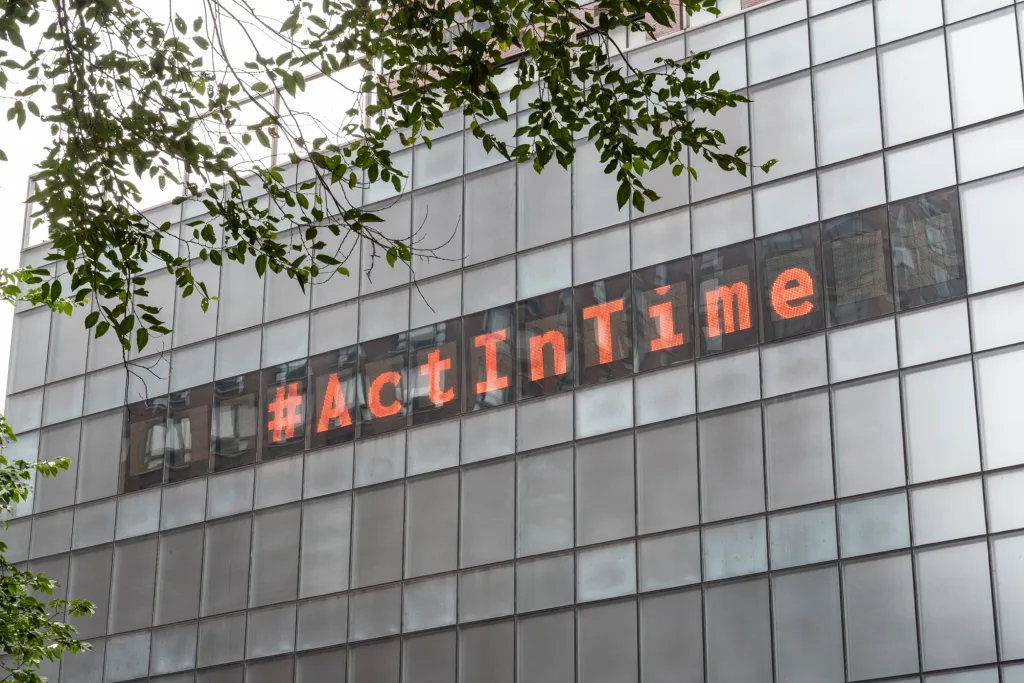The world’s carbon budget is running out. Each year, humans emit around 42 billion metric tons of CO2. If we continue at that rate, we have less than five years left before we’ve emitted so much that it’s very unlikely that the world will be able to limit warming to 1.5 degrees Celsius (34.7 degrees Fahrenheit), a key goal of the Paris climate agreement.
A massive, 80-foot-wide clock in New York City’s Union Square is counting down the minutes. On Monday, it ticked from five years down to four years and 364 days.
By the time the next president of the United States leaves office, in January 2029, that climate fate will be sealed. Some of it is inevitable at this point: We’re not going to get to net-zero emissions in five years. But whatever the next president does on climate—whether it’s Donald Trump’s “drill, baby, drill” or a Democrat pushing for ambitious climate action—it will happen at the most consequential time for the future livability of the planet.

“The elephant in the room for climate is the outcome of this fall’s election,” says Rob Jackson, a climate scientist at Stanford University and author of Into the Clear Blue Sky, a new book about how to tackle climate change. “Four years of a climate-bashing administration would make the United States a global pariah. Our economy can’t afford it and neither can our climate.”
Over each of the past 12 months, the planet has already seen temperatures that are 1.5 degrees hotter than the global average before the Industrial Revolution. Since climate scientists look at temperatures over multiple decades, it’s too soon to say that we’ve officially reached that new average temperature. But we’re on the brink of it. Already, at current levels of warming, we’re seeing more extreme heat, more extreme flooding, more droughts that are killing crops, bigger wildfires, and a long list of related impacts, from a strained electric grid and higher insurance rates to premature deaths and dying coral reefs.
Each fraction of a degree matters. While it would be better to limit warming to 1.5 degrees—and it obviously would have been even better to stop it much sooner—the more that can be done to avoid 1.7 or 1.8 or 2 degrees of warming, the more catastrophic impacts can be avoided.
“We’ll probably blow past [the 1.5 degree] target,” says Leah Stokes, an associate professor of environmental politics at the University of California, Santa Barbara, who focuses on climate policy. “But we shouldn’t let go of it as a goal, because it is about orienting ourselves toward what we need to accomplish and getting as close to that as we can.”
After we “overshoot” 1.5 degrees, if we can decarbonize the economy, carbon removal—both through natural methods like reforestation and machines that suck CO2 out of the air—can help begin to clean up the atmosphere, though some climate impacts will likely be permanent before that can happen. It’s also incredibly challenging to do at the scale that’s necessary: We’d need a carbon removal industry that’s roughly the size that the fossil fuel industry is now.
The first step is to drastically cut emissions. Global leaders have started to make progress, Stokes says, including President Joe Biden, who has accomplished more than any other U.S. president on climate change. The impacts from the landmark Inflation Reduction Act are just beginning to be felt. Other countries are also making progress. “There are still reasons to feel hopeful,” she says. “For example, there are recent projections that China may peak its pollution this month.”

But it’s critical to push governments to act faster to deal with the reality of climate science, scientists and activists say. “We have known about this crisis for 40 years, and for almost as long we’ve known about many of the key solutions,” says Gan Golan, one of the cocreators of the Climate Clock, which also has large clocks displayed in other cities around the world, from London to Beijing. The New York City clock has been on display since 2020.
“Here we are now, with so little time left on the clock, because fossil fuel companies have denied the problem and delayed implementing solutions,” Golan continues. “We have to hold our governments and corporations to the deadlines that science has clearly shown us are necessary to preserve a livable planet. Our message is that while time is short, it is not too late. In fact, it will never be too late for us to fight for people and planet. Even if we surpass 1.5 C, which we are on track to do, theoretically we can bring it down. However, the longer we delay, and the slower we are to enact the big changes we need, the harder it becomes. Our best window of action is the next five years.”